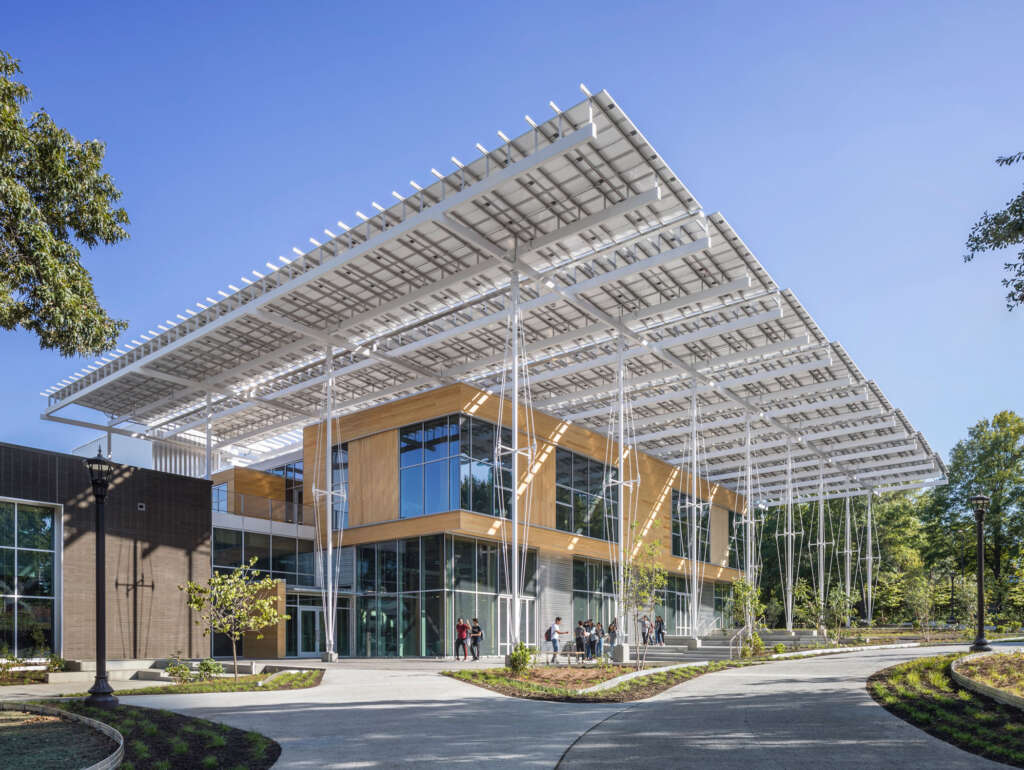
Kendeda Building
Architect: Miller Hull Partnership
Location: Atlanta, Georgia
Type: Academic
Year: 2021
Photographs: Jonathan Hillyer, Gregg Willett
Generating 225 Percent of its Energy Needs from Solar, Capturing Rainwater for Drinking, and Screening Out Common Hazardous Chemicals, Award-Winning Project Seeks to Transform Buildings in Southeast and Beyond.
The following description is courtesy of the architects. The Georgia Institute of Technology today announced that the Kendeda Building for Innovative Sustainable Design has earned Living Building Challenge certification, the world’s most ambitious and holistic green building achievement. The certification from the International Living Future Institute independently verifies that the Kendeda Building is among the greenest in the world.
“We feel a responsibility to lead by example,” said Ángel Cabrera, president of the Georgia Institute of Technology, where the Kendeda Building is located. “This building — which is a tribute to the power of human ingenuity to find new solutions to our greatest challenges — aligns with our long-standing vision for our campus to serve as a laboratory for innovation to inspire and develop tomorrow’s leaders who advance technology and improve the human condition.”
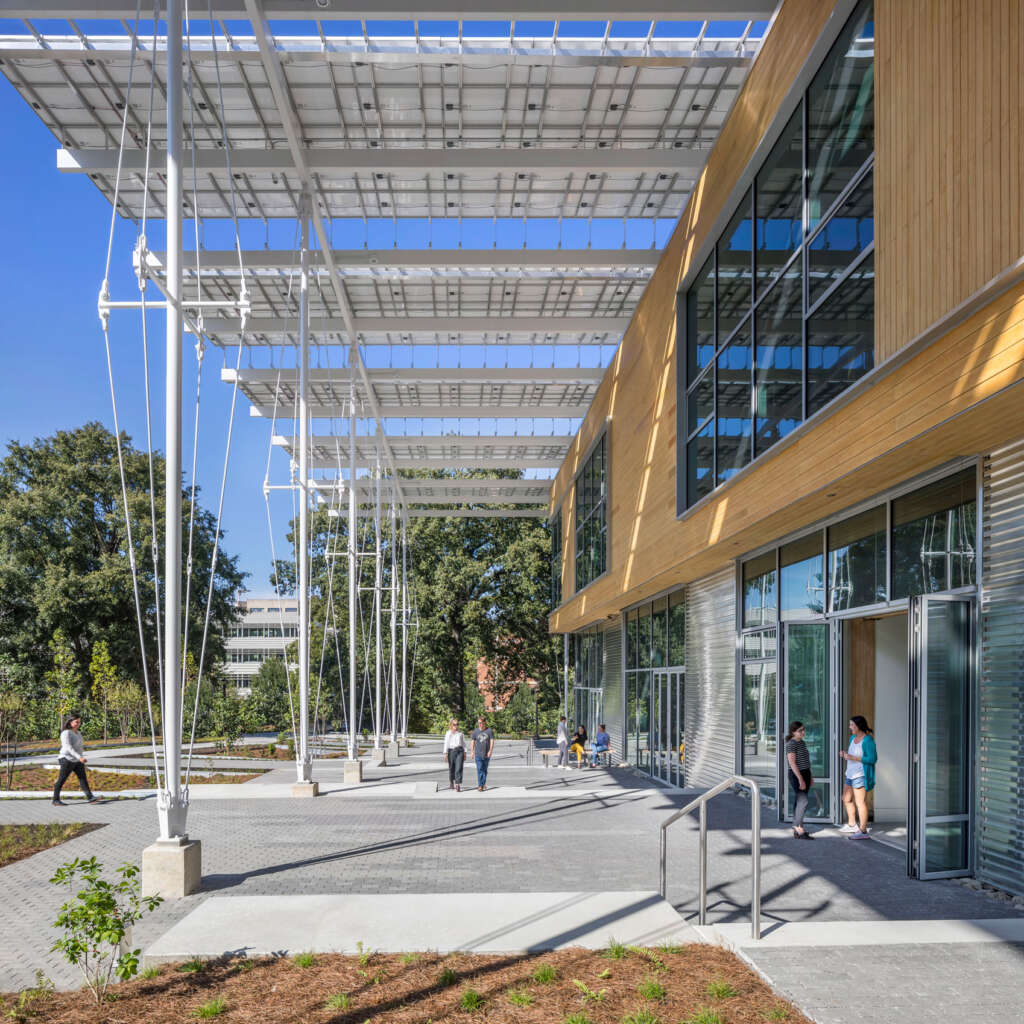
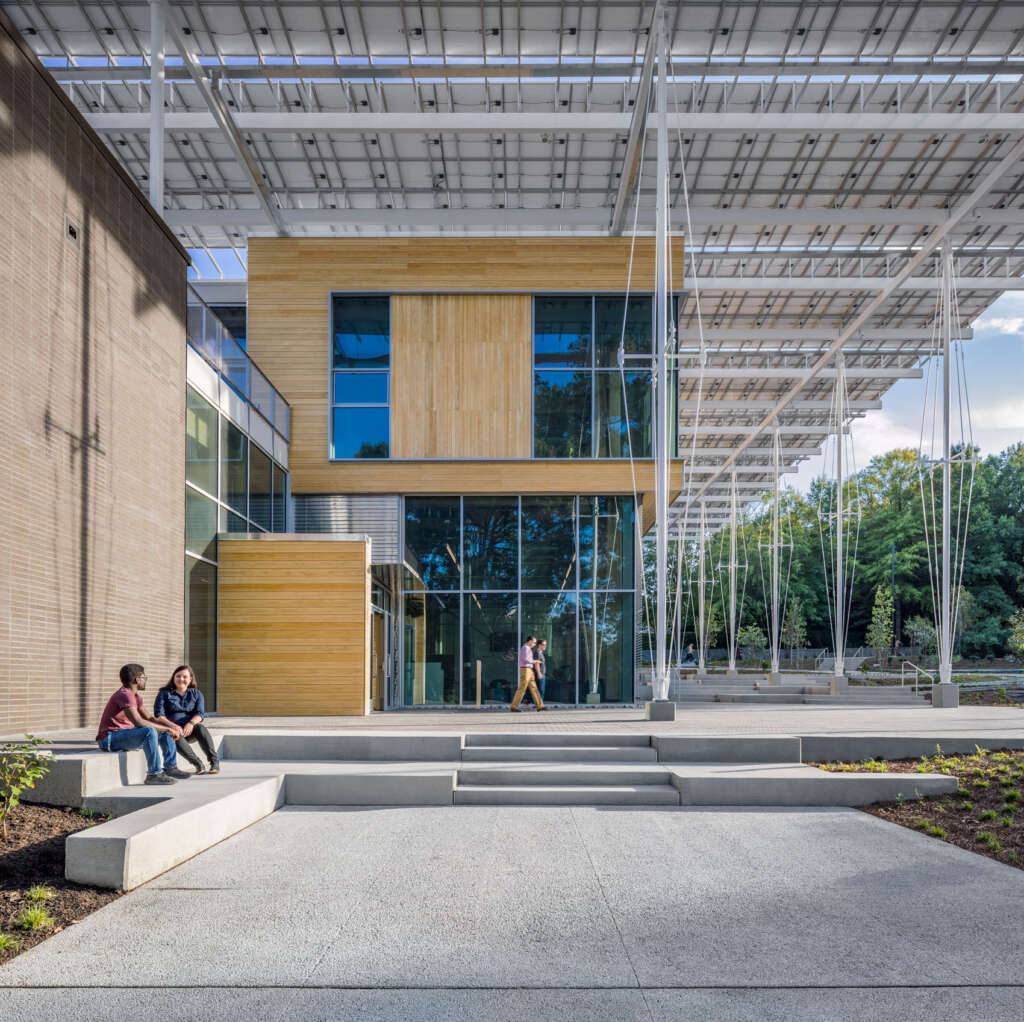
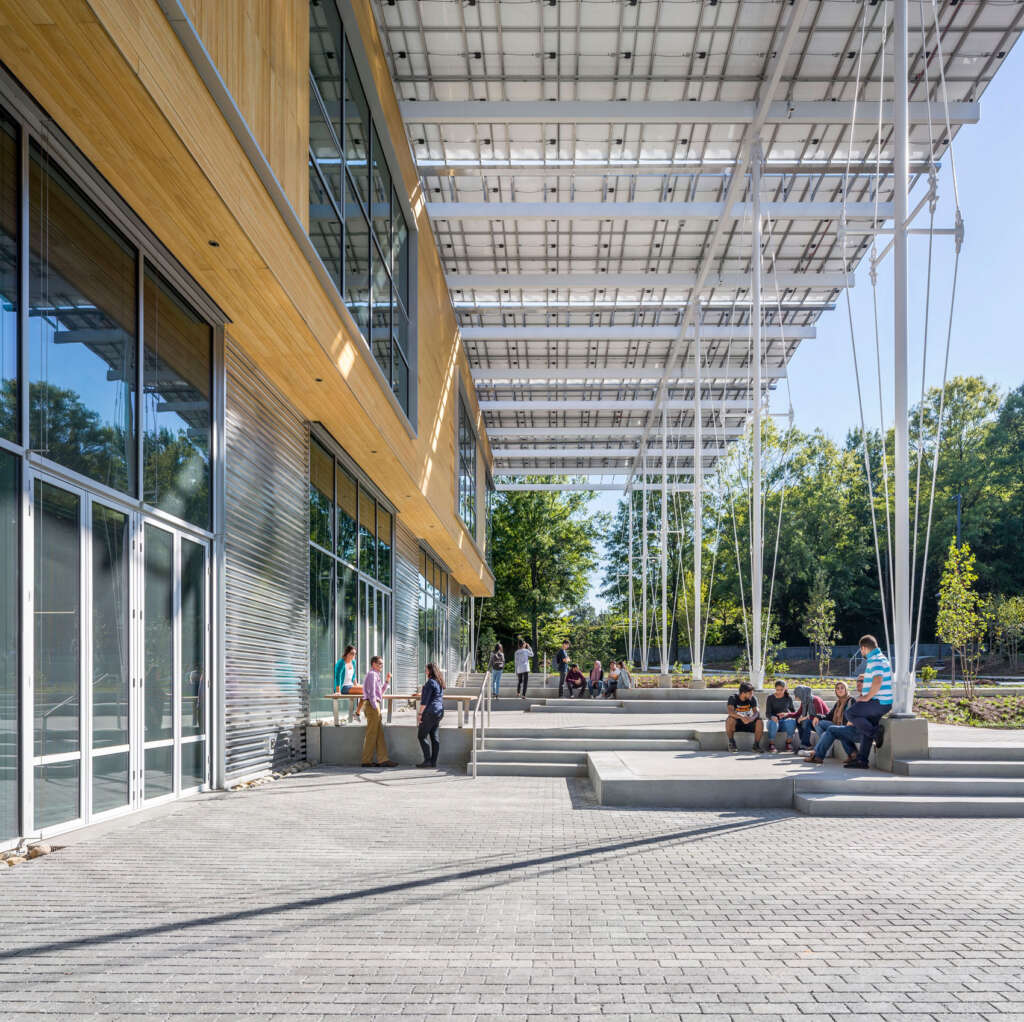
The Living Building Challenge (version 3.1) requires a 12-month performance period, during which time the project must prove it is net-positive for energy and water. This means it generates more energy from onsite renewable sources than it uses. The building also collects and treats more rainwater onsite than it uses for all purposes, including for drinking.
Meeting all seven Petals in the Living Building Challenge — Place, Water, Energy, Health + Happiness, Materials, Equity, and Beauty — the Kendeda Building is the first Living Certified building of its scale in the Southeast U.S., where a warm humid climate poses many challenges. In spite of this, over the performance period the building generated 225 percent of the energy needed to power all of its electrical systems from solar panels on its roof. It also collected, treated, and infiltrated 15 times the amount of water needed for building functions.
“We partnered with Georgia Tech on this transformational project because the institution is full of world-class problem solvers. Students passing through the Kendeda Building today will be the engineers, architects, scientists, product designers, urban planners, and policy makers of tomorrow,” said Diana Blank, the founder of The Kendeda Fund, whose $30 million grant to Georgia Tech made the building possible. “By raising the bar for building performance, we are encouraging Georgia Tech to keep reaching higher. We want students and faculty to embrace the challenge, continually asking ‘How can we improve on this?’”
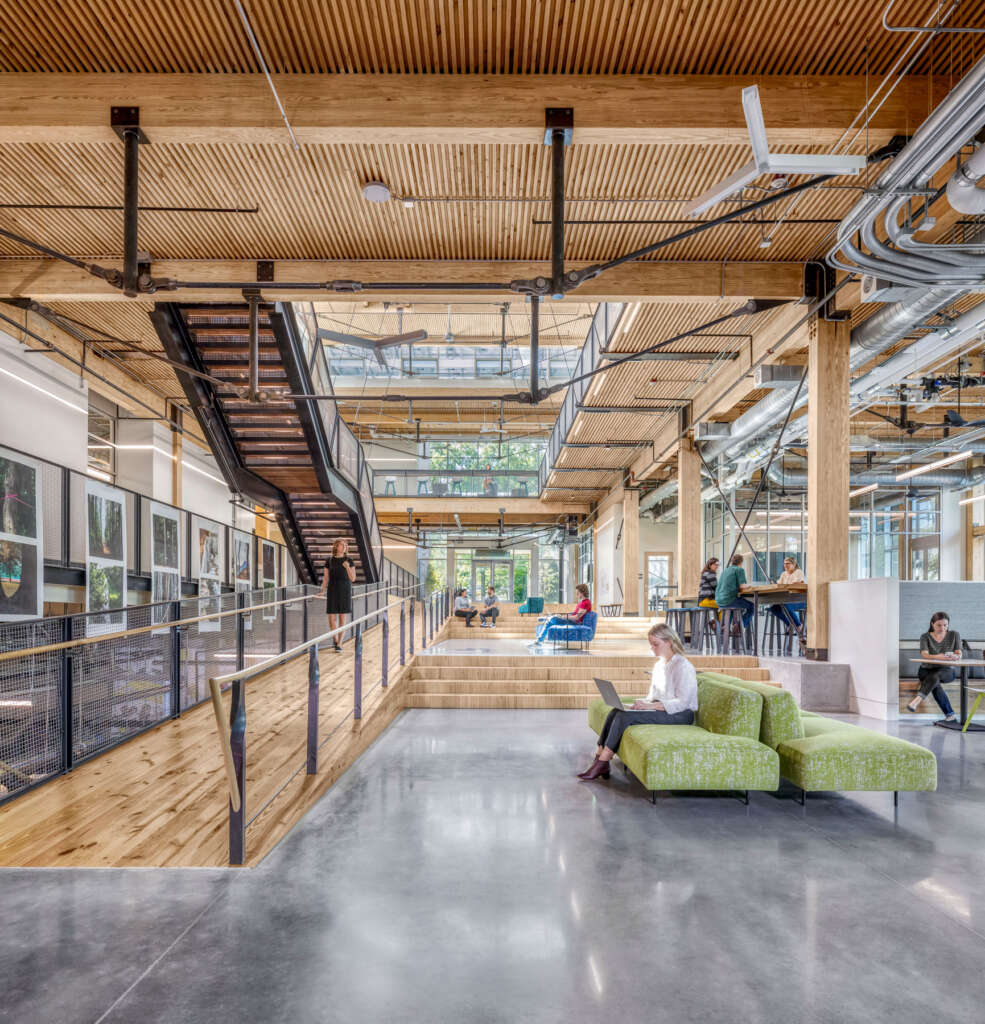
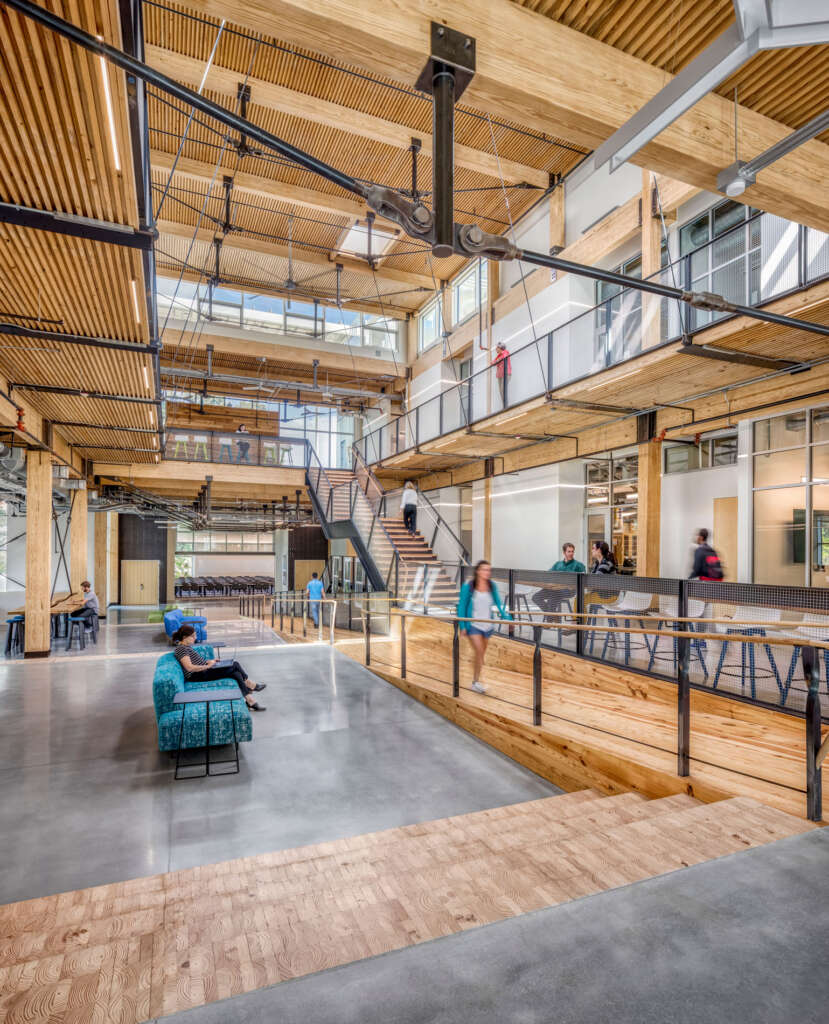
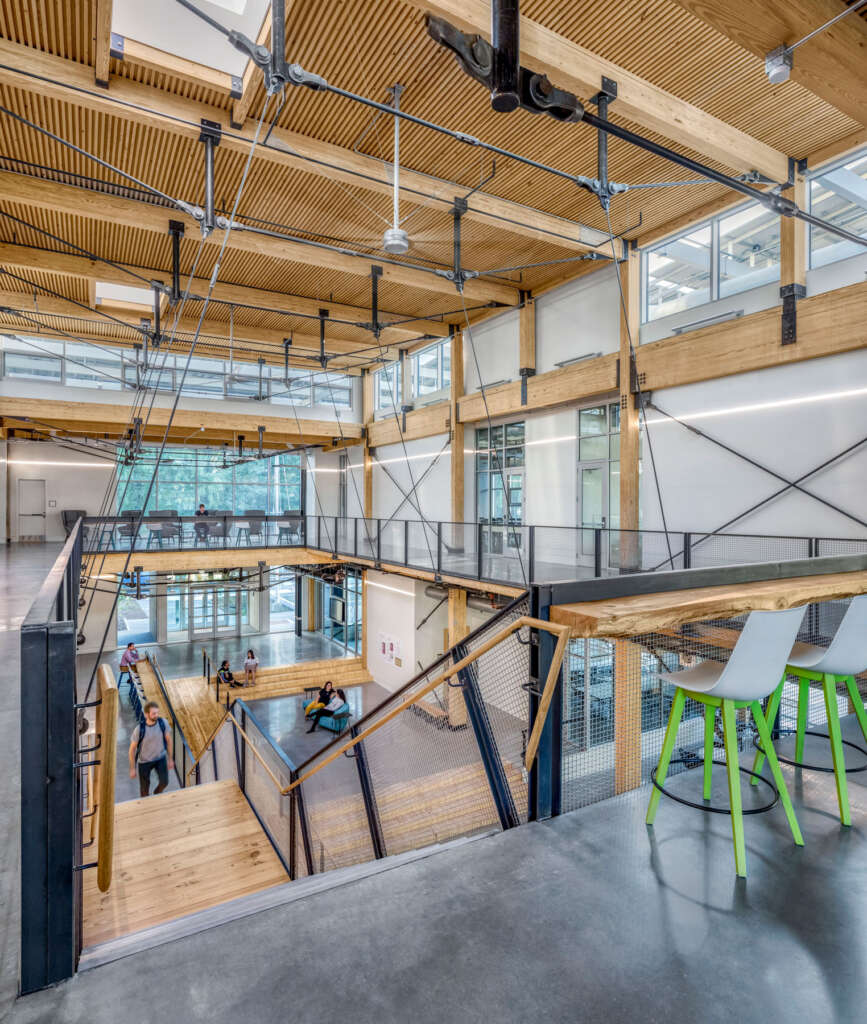
The project’s goal is to support the educational mission of Georgia Tech while transforming the architecture, engineering and construction industry in the Southeast U.S. by advancing regenerative building and innovation, and by showcasing synergies between environmental stewardship, social equity, and economic development. Regenerative buildings create more resources than they use, including energy and water. Through the act of creating buildings that are regenerative, Georgia Tech is charting a path for others to reverse climate change, support human health and address social inequalities.
The Living Building Challenges consists of seven performance categories called Petals that are subdivided into 20 Imperatives, which must be met to earn the certification. Performance metrics from the Kendeda Building include the following:
- Energy efficient electrical and mechanical equipment, a tight building envelope, with a 330-kilowatt photovoltaic canopy that supplies 225 percent of the building’s energy needs on an annual basis.
- The photovoltaic canopy shades the building and captures rainwater. The water is stored in a 50,000-gallon cistern in the basement, before being treated and used for all purposes, including drinking.
- The building is composed of materials screened for hazardous “Red List” chemicals, such as bisphenol A (BPA), halogenated flame retardants, phthalates, and formaldehyde. Chemicals on the Red List have been shown to harm human and environmental health, even though they are common in most buildings.
- Wood from sustainably managed forests, salvaged materials and other sourcing strategies significantly reduce the building’s embodied carbon emissions.
- By eliminating 99 percent of its construction waste and incorporating reclaimed locally sourced materials, such as reclaimed wood for the structural decking and salvaged slate tile in the restrooms, the project diverted more waste from the landfill than it sent to the landfill.
- Composting toilets nearly eliminate potable water use for sewage conveyance and allow for human waste to be turned into fertilizer for use off-site.
- The building allows for universal access. Its central feature is an accessible ramp connecting the terraced main floor so that all people have a similar experience throughout the project.
- The design and construction team went above and beyond the Living Building Challenge Equity Petal by promoting an equitable and inclusive sense of community. To build the ceiling panels and floor systems, for example, the general contractor partnered with Georgia Works!, a nonprofit helping chronically homeless men become self-sufficient.
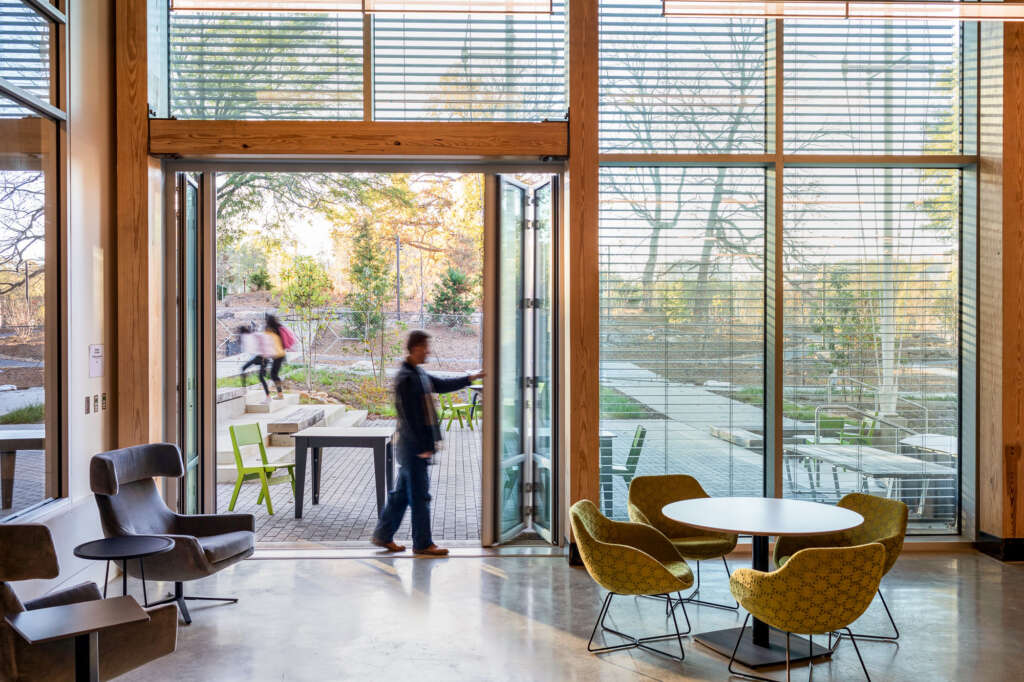
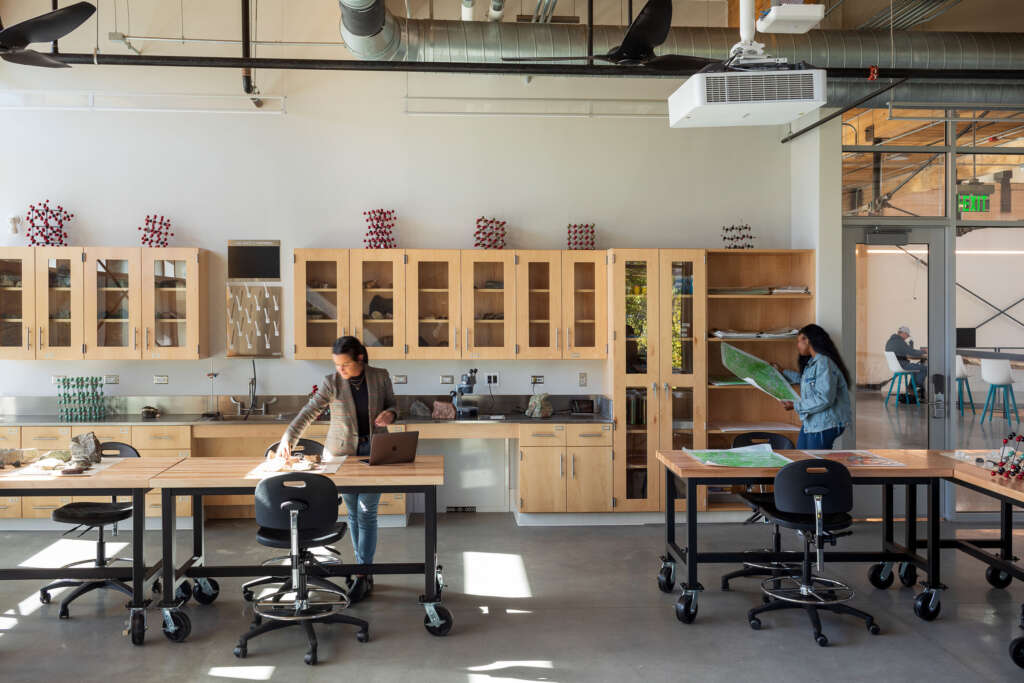
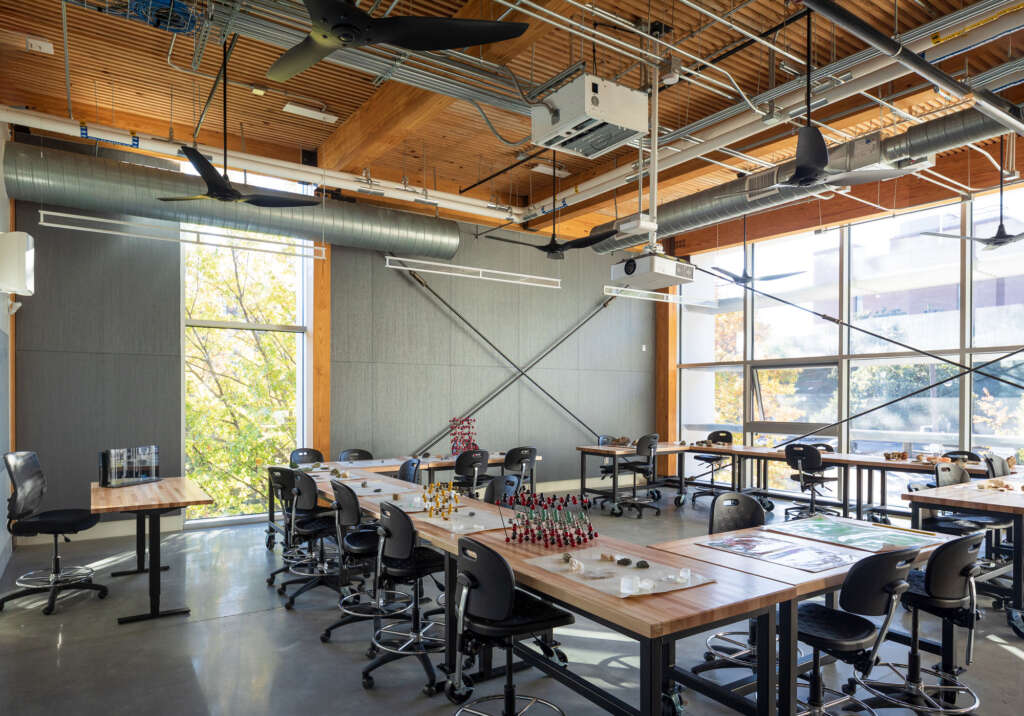
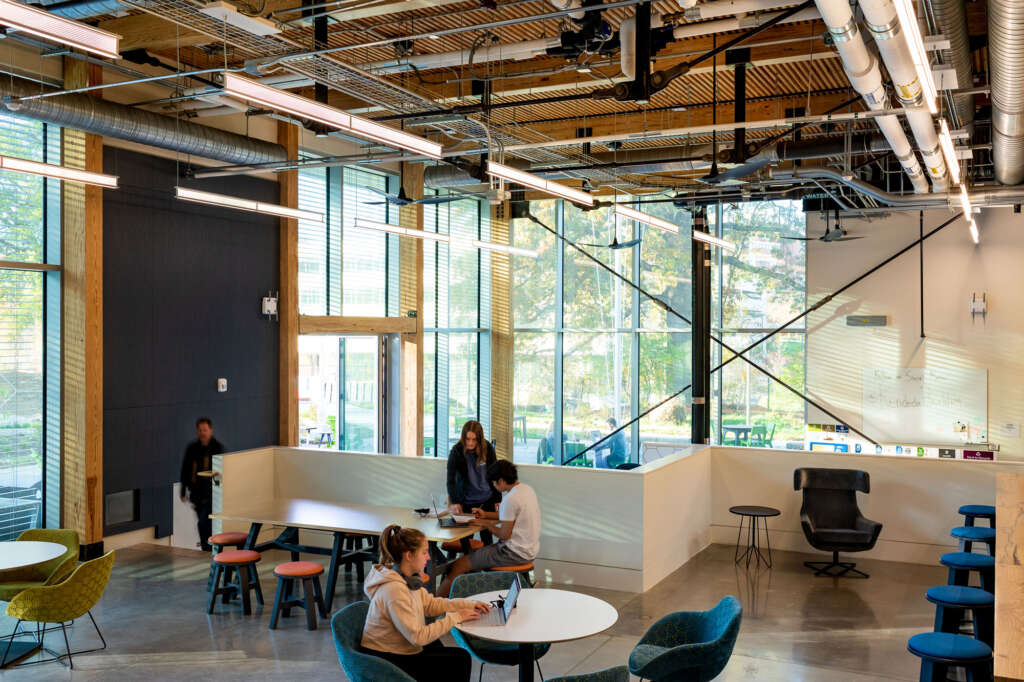
“Living Buildings are the future,” said Scott Cannon, executive vice president and general manager of Skanska’s building operations in Georgia and South Carolina, the general contractor. “We’ve been committed to sustainability for years and have seen how projects like this are a catalyst to reshape how people think about the built environment. It illustrates the practical and replicable solutions, materials, and technologies that other buildings in the Southeast can use to meet similar environmental standards.”
Regenerative design is resilient and supports carbon neutrality, helping to fight climate change. In a region challenged by flooding and drought, the Kendeda Building also shows that regenerative design can treat stormwater, conserve potable water, lower the risk of downstream flooding, reduce burden on existing infrastructure, and save money on utilities.
“If there was any doubt, we have shown that net positive energy and net positive water are both within reach in Atlanta and across the Southeast,” said Joshua Gassman of Lord Aeck Sargent, one of the lead architects on the project. “Using analytics and sound building science, we were able to provide comfort to the building’s occupants, connect them to nature and the history of the place, and live within the water and energy means of the site. We were able to do all of this while creating a clear and sustainable vision for the future.”

Gregg Willett 
Jonathan Hillyer
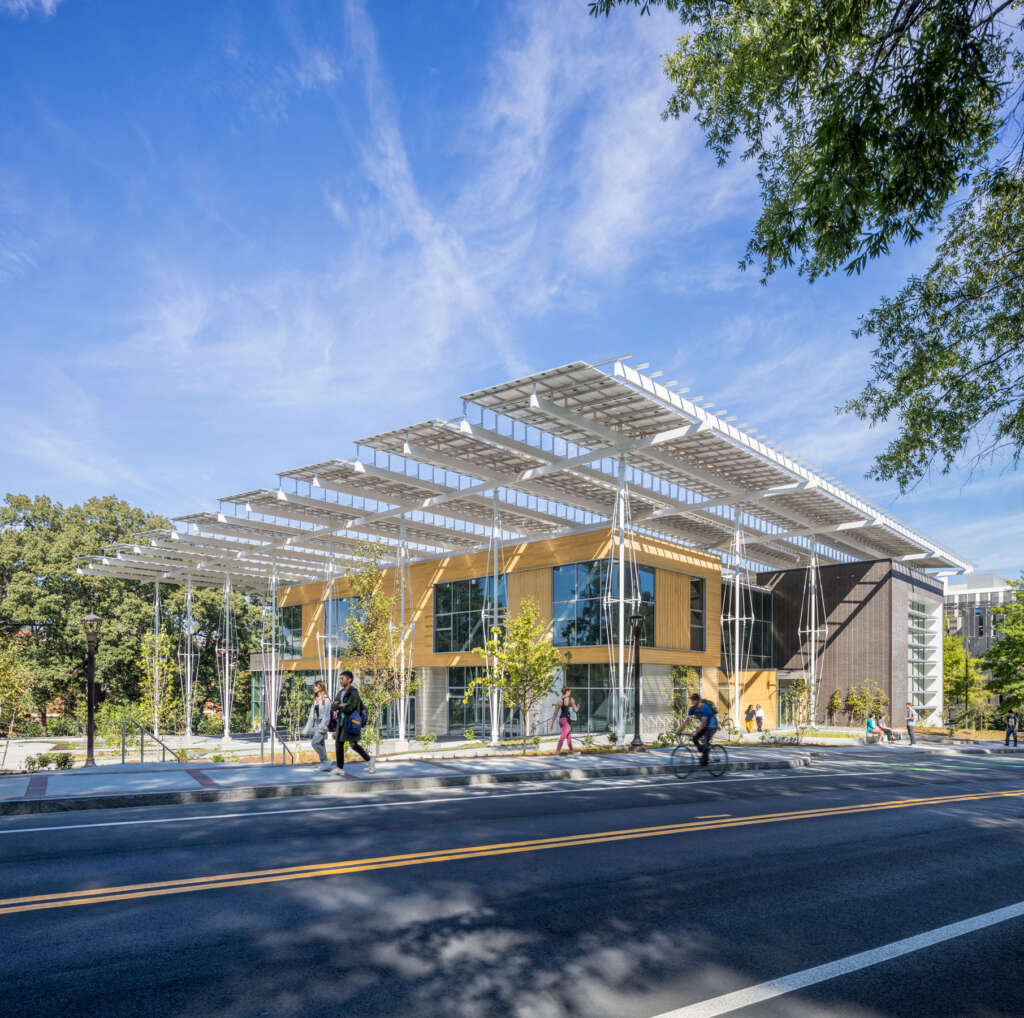
At $544 per gross square foot, the Kendeda Building is 13 percent more expensive than a comparable building at Georgia Tech. However, in reality, there are few comparable buildings of this type that include the infrastructure for net positive energy and water in the construction cost.
“We took the lessons we learned from the Bullitt Center and adapted those ideas for a new climate and new building type,” says Margaret Sprug, principal at The Miller Hull Partnership, which designed the building in collaboration with Lord Aeck Sargent and served as the lead architect of the Bullitt Center, another well-known Living Building. “The Kendeda Building serves as an inspiration and gathering place for people from around the region who are advancing sustainability and regenerative design.”
The knowledge and processes of the Kendeda Building are already being translated to other projects. Thousands of people have toured the project, the entire design and construction team have learned deep sustainability lessons throughout the life of the project, and the students and administrators who inhabit the building on a daily basis will all take these lessons out into the world and apply them to their future projects.
The Kendeda Building’s achievement is being celebrated at Living Future ‘21, a virtual gathering of the world’s leading architects, contractors and product designers.






